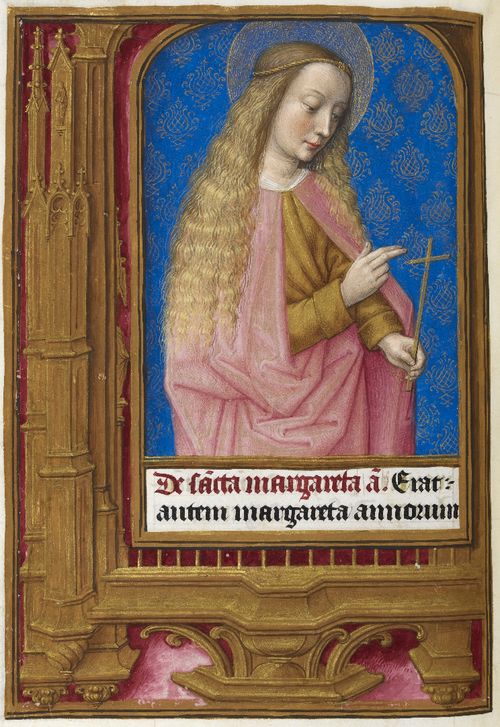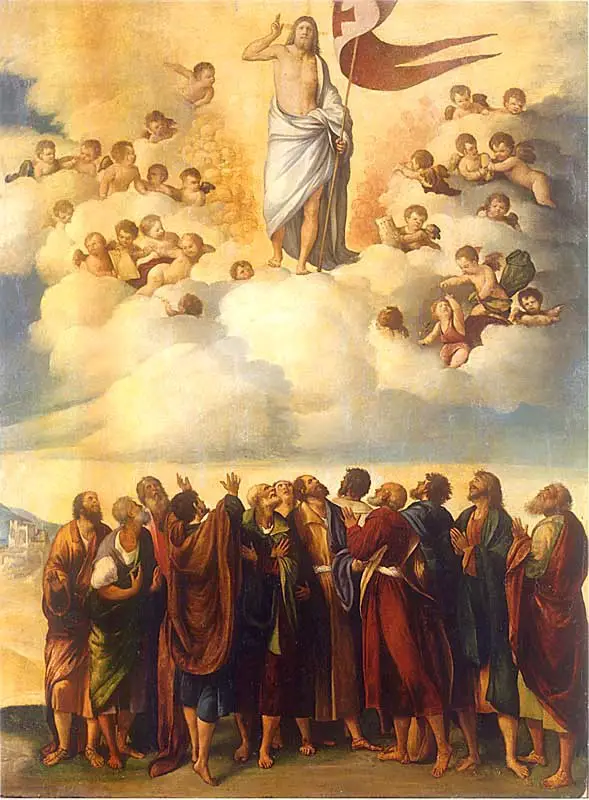2 June – The Feast of St Elmo or St Erasmus
This feast day commemorates the martyrdom of St Erasmus/St Elmo of Formia, Bishop of Formium in Italy. He was tortured and executed for being a Christian in the year 303. He is vemerated as one of the Fourteen Holy Helpers, saints whose intercession is believed to be particularly effective against disease.
It is said that St Elmo was once tortured by having hot iron hooks stuck into his intestines but he miraculously endured his suffering. This story led to him becomingthe patron saint of abdominal pain and can be invoked against stomach pain and colic. He is also the patron saint of sailors. According to legend, he carried on preaching when a thunderbolt struck the ground next to him and the blue lights that can be seen at the top of ships' masts during thunderstorms became linked with St Elmo because sailors believed that the lights were souls rising to glory due to the saint's intercession. The lights were seen as a good omen because they showed the presence of St Elmo and they became known as St Elmo's fire.
Other stories and legends about St Elmo include that he was fed by a raven while living in solitude at Mount Lebanon, where he'd fled to avoid persecution, and that an angel released him when he was imprisoned.
In the medieval and Tudor calendar, St Elmo's Day became the traditional time for shearing sheep.
11 June – The Feast of St Barnabas
11th June is the feast day of St Barnabas, an early Christian who was born Joseph in Cyprus. He was renamed Barnabas when he joined the Apostles in Jerusalem. He carried out several missionary journeys with Paul the Apostle and is mentioned in the Book of Acts. According to Christian tradition, Barnabas was martyred in Cyprus in 61 AD, being stoned to death. He is seen as the founder of the Cypriot Orthodox Church.
According to Steve Roud, in The English Year, St Barnabas's Day was celebrated in the 15th and 16th centuries by decorating churches with garlands of flowers such as roses, woodruff and lavender. He also writes of how “maidens went 'gathering' for church funds, and money was paid out for 'bread, wine and ale for the singers of the King's Chapel and for the clerks of the town'.”
24 June – The Feast of St John the Baptist and Midsummer's Day
Here in my area of rural Spain, the feast of St John, or San Juan as he is called here, is a special time. People gather on the night of 23rd at our local natural thermal pool and at midnight they all jump in (or get pushed in!). Like the baptisms that John the Baptist did, this is seen as symbolising the washing away of sins. Then, sardines are cooked on open fires. In coastal areas, sardines are cooked on bonfires on the beach, people jump over the fires for luck and then run into the sea at midnight.
The Feast of St John the Baptist was also an important celebration in medieval and Tudor England, coinciding with Midsummer, the pagan celebration of the summer solstice. It was a time when it was believed that the fairy folk were abroad and humans could be magical. Just as in Spain today, fire was at the heart of the celebrations and people back then would also jump through the fires to bring good luck. It was also believed that evil spirits were roaming free and that the fires warded them off. The actual evil that was around at this time was disease, brought by fleas and mosquitoes which bred at this time of year and which spread malaria and the Plague. One fire that was lit at this time was the “bone fire”, or bonfire, which was made up of bones. Its pungent smell was believed to ward off evil and scare off dragons. Fire could also be used to predict the farmer’s fortune. A cartwheel was wrapped in straw, set alight and then rolled down a hill. If it was still burning when it got to the bottom then the farmer would have a good harvest.
There was also plenty of dancing, drinking of ale and socialising, as there is today in my community.
Unfortunately, the Midsummer bonfires were seen as superstitious by religious reformers and so were eventually stopped.
Midsummer was also the time for haymaking and other midsummer traditions include decorating churches with birch boughs, decorating houses with greenery, and processions and parades. It was also a time linked with love divination. These divinations included girls throwing hemp seed over their shoulders to see the form of their future husband and girls sticking orpine flowers up in the joist of buildings in pairs, one to symbolise the man and the other the woman. “Accordingly as the orpine did incline to, or recline from ye other, that there would be love, or aversion; if either did wither, death.” (John Aubrey, 1686, quoted in Steve Roud's book).
29 June – Feast of St Peter and St Paul
The Feast of St Peter and St Paul, which commemorated the martyrdom of the two apostles, was the traditional time for the "rushbearing" ceremony, a feast of dedication when the parishioners would process to the church and strew the church floor with newly cut rushes, new mown hay from the hay-making, and wild flowers.




Leave a Reply